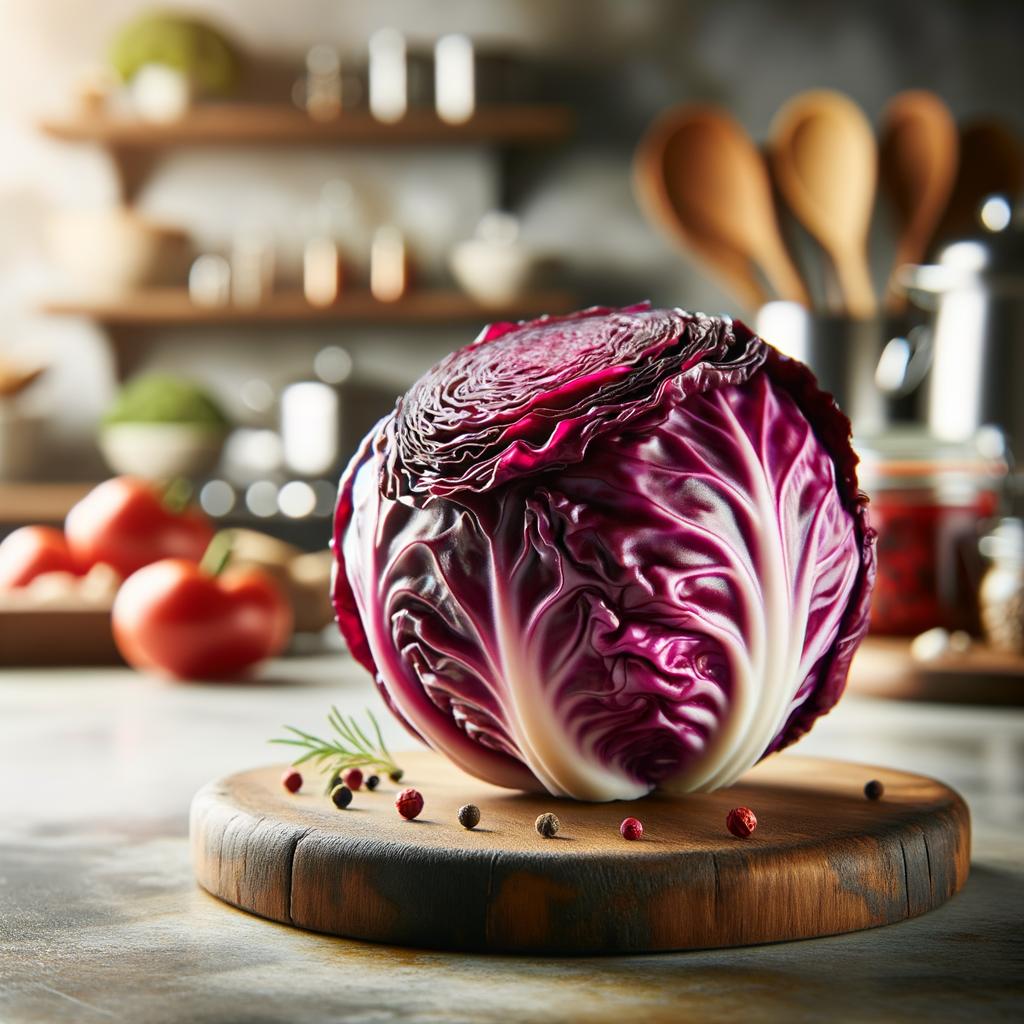Pickled Red Cabbage

Description
Pickled red cabbage, a vibrant and crunchy delight, is a feast for both the eyes and the palate. Its ruby-red hue, a result of its anthocyanin pigment, is a striking contrast to the usual greens and yellows we see in our food. The texture is crisp and satisfying, offering a pleasurable crunch with each bite. The flavor profile is an intriguing mix of tart, tangy, and subtly sweet, owing to the vinegar-based pickling process. This humble vegetable stands out from its raw counterpart and other pickled ingredients due to its unique color retention even after pickling, and the remarkable ability to enhance the flavor of a variety of dishes.
Primary Uses
Pickled red cabbage is a versatile condiment, adding a zing to a wide array of dishes. It's a staple in British cuisine, often served alongside hearty roasts and is a key component in German and Eastern European dishes like sauerkraut. It also adds a delightful crunch and acidity in salads, sandwiches, and tacos. In non-culinary uses, the vibrant red color has been used as a natural dye in some cultures.
History
Red cabbage has a rich history dating back to ancient times. The Romans revered it for its medicinal properties, believing it to be a remedy for various ailments. The art of pickling cabbage, however, is believed to have originated in Northern Europe as a method of preserving the vegetable for the harsh winter months. Over time, this preservation technique has evolved into a culinary tradition, with each region adding its unique twist to the pickling process. There's a charming folklore in some regions of Germany that suggests, children are told that babies come from "cabbage patches", adding a whimsical touch to the history of this vegetable.
Nutritional Information
Pickled red cabbage is not just a flavorful addition to meals, but also a nutritional powerhouse. It's rich in Vitamin C, Vitamin K, and fiber, and the pickling process enhances the bioavailability of these nutrients. It also contains anthocyanins, a type of flavonoid with antioxidant properties that contribute to its vibrant color. Despite its nutritional benefits, it's important to consume pickled red cabbage in moderation due to its sodium content from the pickling process. Compared to raw red cabbage, the pickled version has a similar nutritional profile but with added probiotics, making it a gut-friendly choice.

